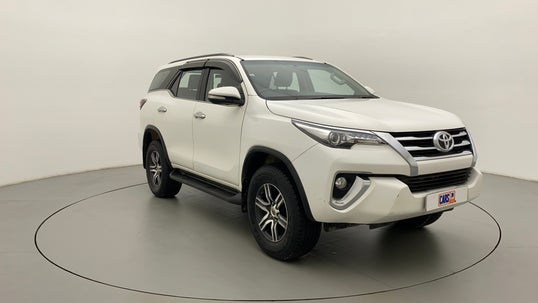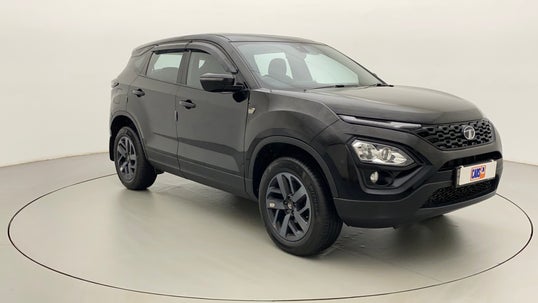Form 20 For Vehicle Registration: Everything You Need to Know

Updated on: 3rd April, 2024 IST

Welcome to our comprehensive guide on 'Form 20' – one of the most important documents for vehicle registration. If you want to know more about Form 20 or need guidance on how to fill Form 20 for vehicle registration, you've come to the right place.
Form 20, often referred to as 'Form 20 RTO' or 'Form 20 Parivahan,' holds significant importance when it comes to vehicle registration. In this blog, we'll simplify the nuances of Form 20, explain its purpose, and provide step-by-step instructions on how to fill out Form No. 20 for vehicle registration.
Additionally, we'll guide you on how to download Form 20 RTO, to make the process smoother and more accessible. Join us as we dissect Form 20 and make your vehicle registration a hassle-free seamless experience.
Table of Contents
- What is Form 20?
- Why is Form 20 Required for Buying a Car?
- How to download Form 20?
- How to Fill Form 20?
- When is Form 20 Required?
- Numbers of Parts in Form 20
- Documents to be Submitted Along with Form 20 at the RTO?
- Documents Required for Vehicle Re-registration When Transferred Between Two States
- The Bottom Line
- FAQs
What is Form 20?
Form 20 or the application for the registration of a motor vehicle, is like your vehicle's ID card. It is what you need to officially register your motor vehicle in India. Whether you're getting a new car or upgrading to a pre-owned one, this form is your pass to the legal road. You fill out Form 20 and submit it to your Regional Transport Office (RTO) in the state where your vehicle will find its new home.
Why is Form 20 Required for Buying a Car?
Here's the deal: When you buy a new car, you usually get a temporary registration number from the dealer. But remember, that's just a placeholder! Within 30 days, you need to replace it with a permanent one. Form 20 is your tool to make this happen. It's like saying, "Hey, this vehicle is mine!"
But here's the twist: If you're buying a used car from a different state, it's like adopting a pet – you've got to give it a new name, or in this case, a new registration number. That means re-registering the car in your state's name, and yes, Form 20 is still your go-to form
Also Read: RTO Form 28, 29, 30, and 35
How to download Form 20?
First things first, you can get Form 20 easily. You can visit your nearest Regional Transport Office (RTO), or if you're tech-savvy, download it from the Parivahan website.
Now, why do you need Form 20? Well, it's because driving an unregistered vehicle in India is not permissible under the law. Whether you're getting a new car or buying a used one, you have to register it. That's where Form 20 comes in.
To download it online, follow these simple steps:
Step 1. Visit the Parivahan website
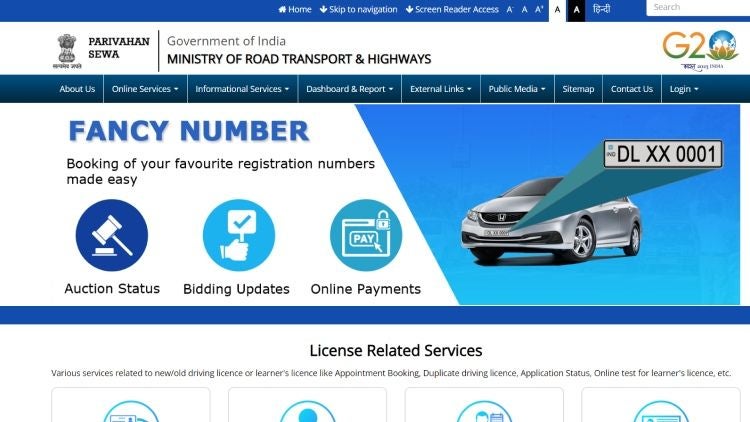
Step 2. Click on 'Informational Services' in the menu

Step 3. Go to 'Downloadable Forms'
Step 4. Click on 'All Forms'

Step 5. Scroll down to 'Form 20' in the vehicle-related category

Step 6. Download From 20
Also Read: RTO (Regional Transport Office) & Driving License Forms
How to Fill Form 20?
Now that you know what Form 20 is all about and have successfully downloaded it, here's a quick guide on how you can fill it.
There are individual sections for you to add the necessary details about yourself, your place of residence, the manufacturer or the dealership where you purchased your vehicle, the technical details of your vehicle, details of the insurance policy, and the amount you paid for the application of registration.
The general rule of thumb is to keep it simple. You need to fill out all the details in the designated section of the form. You can do that all by yourself or, you can ask a friend or relative to help you out.
If you're wondering how Form 20 looks and want to take a closer look at the different sections of the form, here are some images for your reference:

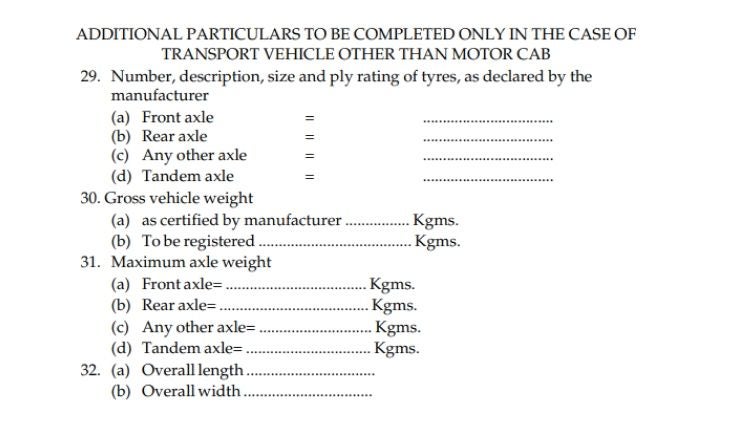

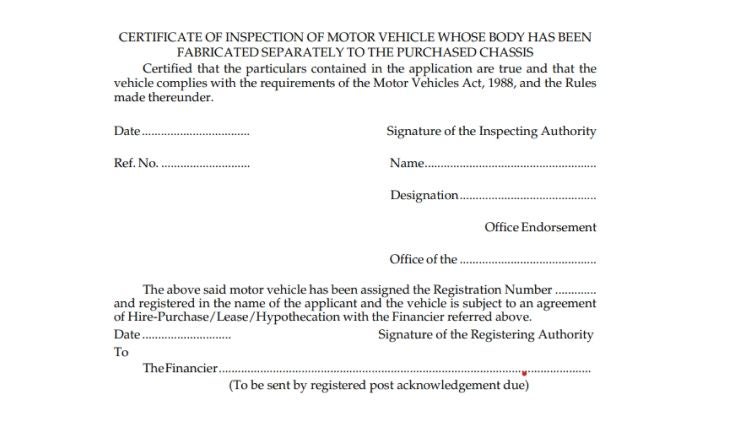
When is Form 20 Required?
It's pretty simple! Form 20 is required when you're purchasing a new car, transferring the ownership of a used car to a new owner, or when you're re-registering a vehicle in a new state.
Read More: Online Driving Licence (DL) Application Form in India
Numbers of Parts in Form 20
Let's break down Form 20 to make it easier to understand. Each section of the form plays a specific role, ensuring your vehicle is good to go. Remember, it's like putting together a puzzle – each piece (section) has its place, and when they all fit, your Form 20 is complete!
Here are the four sections of Form 20:
Section 1: This part is needed for all types of vehicles. No exceptions.
Section 2: Specifically for transport vehicles – the big ones on the road.
Section 3: It's the section with an inspection certificate. This one makes sure your vehicle is in top shape.
Section 4: This section is all about official certification. Think of it as the stamp of approval.
Documents to be Submitted Along with Form 20 at the RTO?
When you're handing in Form 20 to the RTO, you need some additional documents! Each document has a role in the vehicle registration process, so it's like a team effort to get your car on the road legally.
Here's the checklist:
1. Car Insurance Certificate: To prove that your ride is insured
2. Identity & Address Proof: To show who you are and where you live
3. Birth Proof: Just to confirm your birth date
4. PAN Card: Your unique identification number
5. Dealer's Invoice: The receipt from where you bought your car
6. Temporary Registration Certificate: Issued by the dealership for new cars
7. Customs Clearance Certificate: If your car is imported
8. Fitness Certificate: Only if applicable
Also Read: How to Get NOC from RTO
Documents Required for Vehicle Re-registration When Transferred Between Two States
When you're transferring your vehicle to a new state, a bunch of paperwork comes into play. It might seem like a lot, but it's all part of the process to make sure your vehicle is set to roll in the new state.
Here's your checklist:
1. Form 20
2. Form 27: This form is for getting a new registration mark when you move your vehicle to a different state. Think of it as a companion to Form 20, helping with the transfer
3. Original State Registration Certificate: This acts as proof of where your vehicle was first registered
4. Duplicate Form 28 (NOC): This says you're good to move your vehicle to a new state
5. Address Proof: Something that shows where you live, attested by you
6. Car Insurance Proof: To keep your vehicle covered
7. PUC Certificate: Proof that your vehicle is environmentally friendly
8. Fitness Certificate: If it's a commercial vehicle, it needs to be in top shape
9. PAN Card, Form 60, or Form 61: Form 60 is for individuals conducting financial transactions without a PAN number, while Form 61 is for those with only agricultural income and no other sources of income who wish to engage in these transactions. Depending on what applies to you
Also Read: RTO Hypothecation Removal Process Online
The Bottom Line
In this blog, we've emphasised the significance of having the correct documents by your side, such as car insurance and ID proof, to ensure a hassle-free registration process. Form 20 is your key to a smooth vehicle registration journey in India, serving as your entry into legal driving, whether you're buying a new car or acquiring a used one. It's also your go-to when you're transferring your car to a new state.
Don't forget the various sections of Form 20; think of them as pieces of a puzzle, each playing a vital role in the bigger picture. And for those moving their vehicles between states, there's a specific checklist to follow. Armed with Form 20 and the right documents, you're ready to hit the road legally. Happy driving!
FAQs
Q. What is the purpose of Form 20 RTO?
Form 20 RTO serves as the application for the registration of a motor vehicle, making it the official document that establishes ownership and assigns a permanent registration number to a vehicle in India.
Q. Who needs Form 20?
Anyone purchasing a new vehicle, transferring ownership of a used vehicle to a new owner, or re-registering a vehicle in a different state requires Form 20.
Q. Where to submit the filled Form 20?
The filled Form 20 is typically submitted to the Regional Transport Office (RTO) in the state where the vehicle will be registered.
Q. Is there any due date to submit Form 20 in RTO?
When purchasing a new vehicle, you must replace the temporary registration number with a permanent one within 30 days, making it crucial to submit Form 20 promptly.
Q. Is it possible to submit Form 20 online?
Yes, it's possible to download Form 20 online, but the submission process may require an in-person visit to the RTO for verification and processing.
Recently Added Cars to Buy
Other Blogs
- Recent
- Featured
Popular Cities to Sell Car


